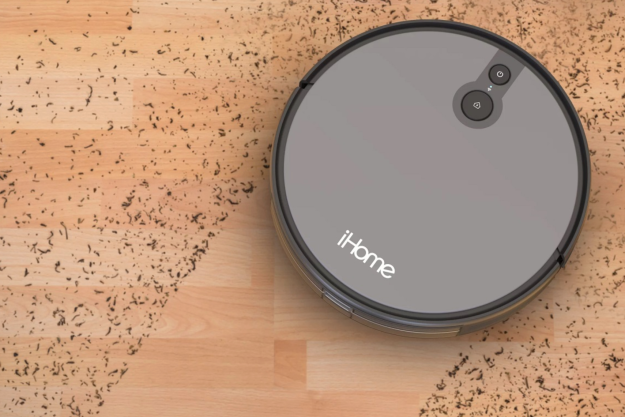
A friend recently said that three gadgets she bought in the last year have changed the way she cooks: an Instant Pot, a sous vide circulator, and an air fryer. She has a lot of roommates and frequently hosts parties at her house. Give the same trio of cooking appliances to the childless couple down the street, and they might very well gather dust in the garage.
At this month’s Smart Kitchen Summit in Seattle, chefs, inventors, and CEOs of food tech companies gathered to talk about the state of the kitchen and where it’s headed. The consensus was that there really is no consensus. That’s because people don’t cook the same way their parents do, let alone how their neighbors do.
“The way that we eat is multimodal, meaning we eat different ways at different times and in different parts of our lives.”
“The way that we eat is multimodal, meaning we eat different ways at different times and in different parts of our lives,” said Brian Frank of FTW Ventures during a panel. That’s the problem with meal kits, he added, that they’re only solving one specific problem, for only a few meals a week. A couple might get a meal kit for three nights, take out three other nights, and cook a big meal on Sunday. And that’s just for dinner.
The size of new American houses has increased over the past 50 years, but the median year homeowners’ structures were built is 1977, according to U.S. Census estimates. Millennials buy homes that are smaller, on average, which makes sense given their budgets and typical family size. But if these buyers, who make up the largest group of those in the market, continue that trend, it could shift how new homes and their accompanying kitchens are built. The lifespan for appliances we heard repeated over and over at the Summit is 10 to 15 years, so over the next decade, remodeled kitchens could already start to look a little different.

Already, there are apartment buildings, like the Via6 in Seattle, with communal kitchens. The units also have personal kitchens, but that could change with the rise of micro-apartments. Dana Cowin, host of the podcast Speaking Broadly, said she could envision a future where some apartments swap the kitchen for something like a snack dispensary or a recycling space to deal with all the garbage that comes along with takeout or delivery.
“All people and all kitchens will not be created equal,” she said of the future kitchen. Instead of the same basic layout you see in most homes, rooms will be more flexible, with delivery-only models, a different design for devoted chefs, and something else entirely for everyone in between.
“All people and all kitchens will not be created equal.”
Pablos Holman of Intellectual Ventures predicts people will be 3D printing strawberries, French bread, and steak in 20 years.
“If what we’re selling is purely sustenance, just purely the ability to eat, you really don’t need a kitchen,” said Jon Jenkins, of Hestan Smart Cooking. He sees the company’s role as filling in the gaps in home cooks’ culinary knowledge. GE Appliances has incorporated the Hestan Cue technology into some of its ranges, giving precise temperature control and guided cooking to those willing to spend $3,400 on an appliance. It was just one example of the many partnerships touted at the Smart Kitchen Summit.

The collaboration between appliance makers, food companies, grocery stores, and other entities is a necessary piece in the future smart kitchen. Innit — which wants to be the platform that connects all these players — unveiled its new version of the Shopwell app, which shows you what food to buy based on your preferences and dietary restrictions. It can then bring that information over to the Innit app and suggest recipes for dinner, based on what you’ve bought.
Eventually, it will use factors like the day of the week and region to make more tailored suggestions — if you need a quick Wednesday night meal because of your daughter’s soccer practice, for example.
“The way you eat in San Francisco and Seattle is very different than probably the Midwest or in the South, so now we can bring some of that into the equation,” Ankit Brahmbhatt, Innit’s VP of product, told Digital Trends.
“If you’re one of those that has the heebie-jeebies about data being collected on you, well, you’re in the wrong industry”
“If you’re one of those that has the heebie-jeebies about data being collected on you, well, you’re in the wrong industry,” said Amy Gross of VineSleuth, adding that it can be used for “some serious awesomeness.” That may be true, and perhaps home chefs don’t care that Hestan is tracking its smart cooking system so closely it knows how many times each person stirred their shallots when making seared scallops.
Analyzing all that data helped Hestan improve that recipe when its team realized using previously frozen scallops affected users’ results. Adding a few tweaks to the recipe made not just one cook better — the one who submitted the complaint in the first place — but potentially hundreds or thousands. But it’s not too much for the same cooks to ask for transparency around what data is being collected and how it’s being used.
Gastrograph, for example, is an app that lets users map the various taste attributes of things like beer, with the idea of helping create hyper-personalized food. Imagine, a potato chip designed to appeal not to the masses but specifically for your palette.

“We literally turn on every sensor that the device has,” the app’s creator, Jason Cohen, told The New Food Economy. “We even collect magnetic field data, which is right now not predictive of anything, but one day…” When we opened the app, it asked for permission to use our microphone and location data, but it wasn’t obvious it was using more of the phone’s sensors, like its light meter.
Before we reach the personalized potato chip, food companies will make other changes first. In the same way manufacturers created bags for microwavable popcorn, they’ll start inventing foods for smart ovens (like June) and perhaps for wirelessly-powered countertops, David Kraft of Xinova told Digital Trends. And as they start designing packaging and ingredients around people’s refrigerators, pantries, and, potentially, in-home vending machines, he predicts one big change: “I really think there will be an end to grocery stores as we know them.”
“I really think there will be an end to grocery stores as we know them”
In 1954, Alice B. Toklas wrote to Poppy Cannon, author of The Can-Opener Cookbook, that her Waring Blender “has revolutionized kitchen work and has been a life saver.” Cannon was deemed a “gourmet in a hurry” in the same era James Beard published his Paris Cuisine (“a bit of Paris mist still clouds Mr. Beard’s eye when he blithely suggests having the local butcher bone a chicken or duck,” wrote a New York Times reviewer, who pointed out this was easy in Paris but difficult outside of major U.S. cities).
A home cook might have had one, both, or neither of these books and prepared meals accordingly. The difference now is that French ingredients aren’t as difficult to come by and guided cooking systems, smart ovens, and on-demand videos can make some novice chefs feel like they can tackle duck à l’orange. Meanwhile, many Thanksgiving tables this year will boast a green bean casserole that lists canned soup as an ingredient.
Twenty years from now, there will likely be people who 3D print every meal, but then again, there are people today who microwave all their dinners.
Editors' Recommendations
- Are smart kitchen gadgets worth it?
- The future of the connected kitchen is just a push of a button away
- Cooking platform SideChef expands its empire with new smart kitchen partnerships
- Food wish fulfilled? Genie launches next-gen pod-based cooking system


